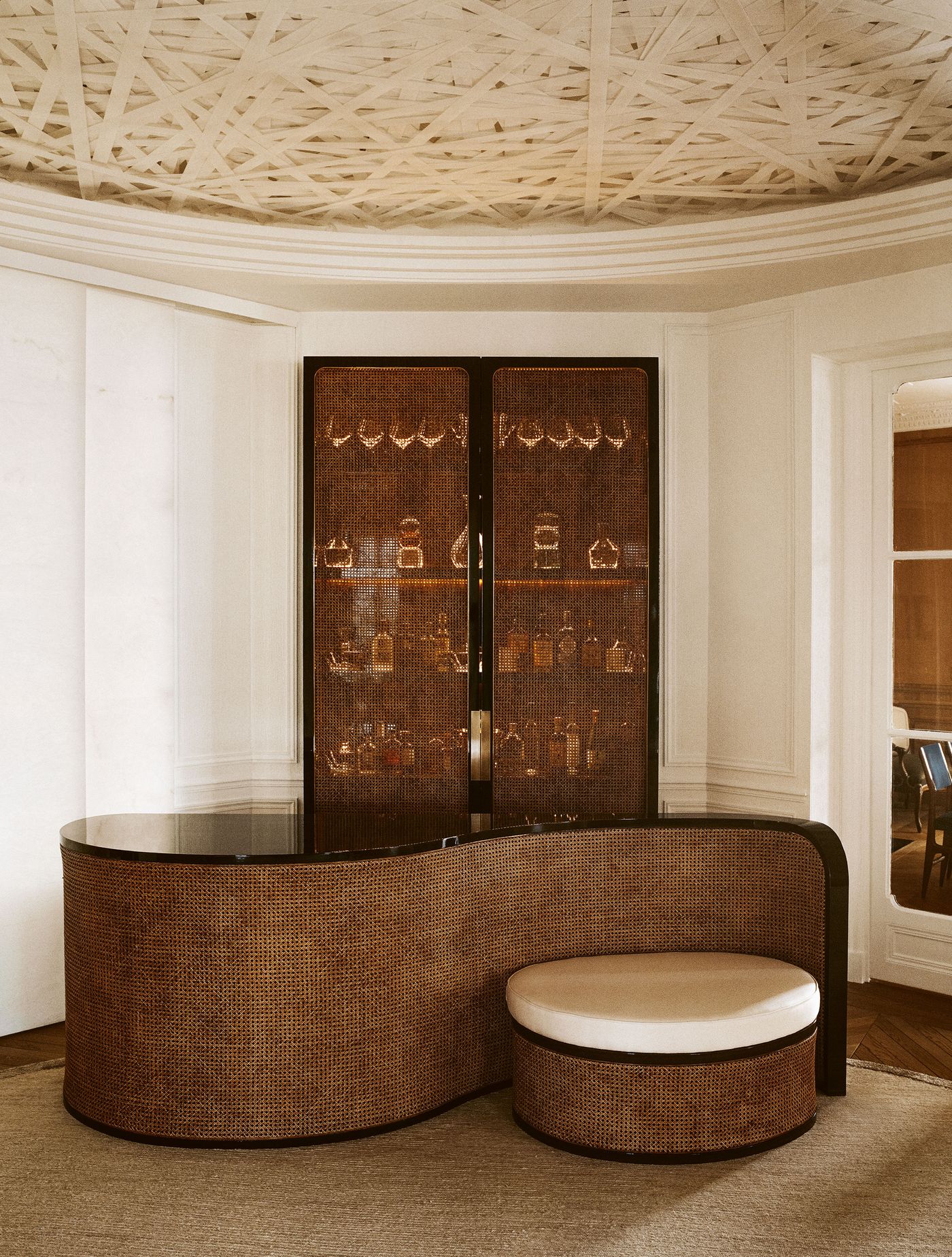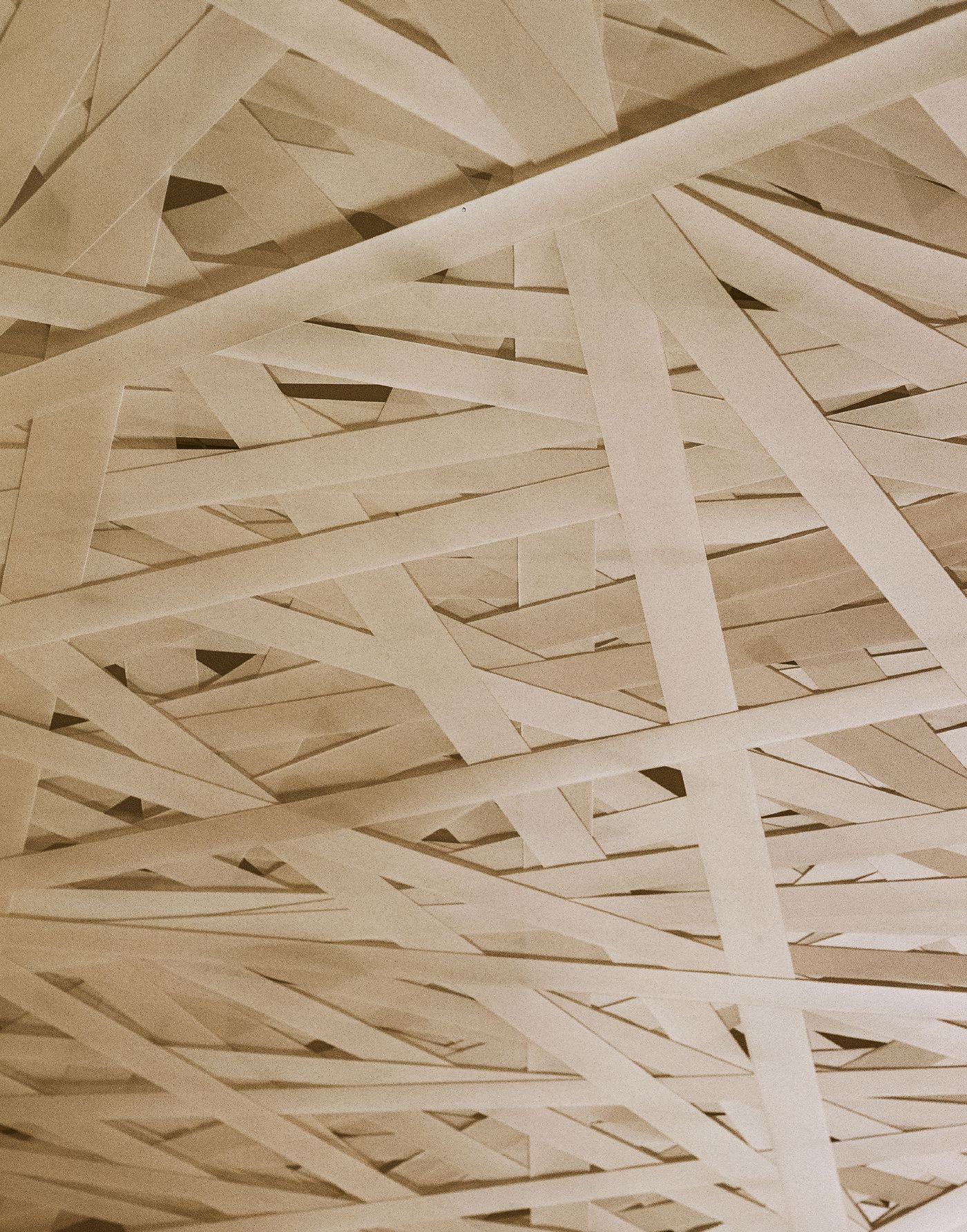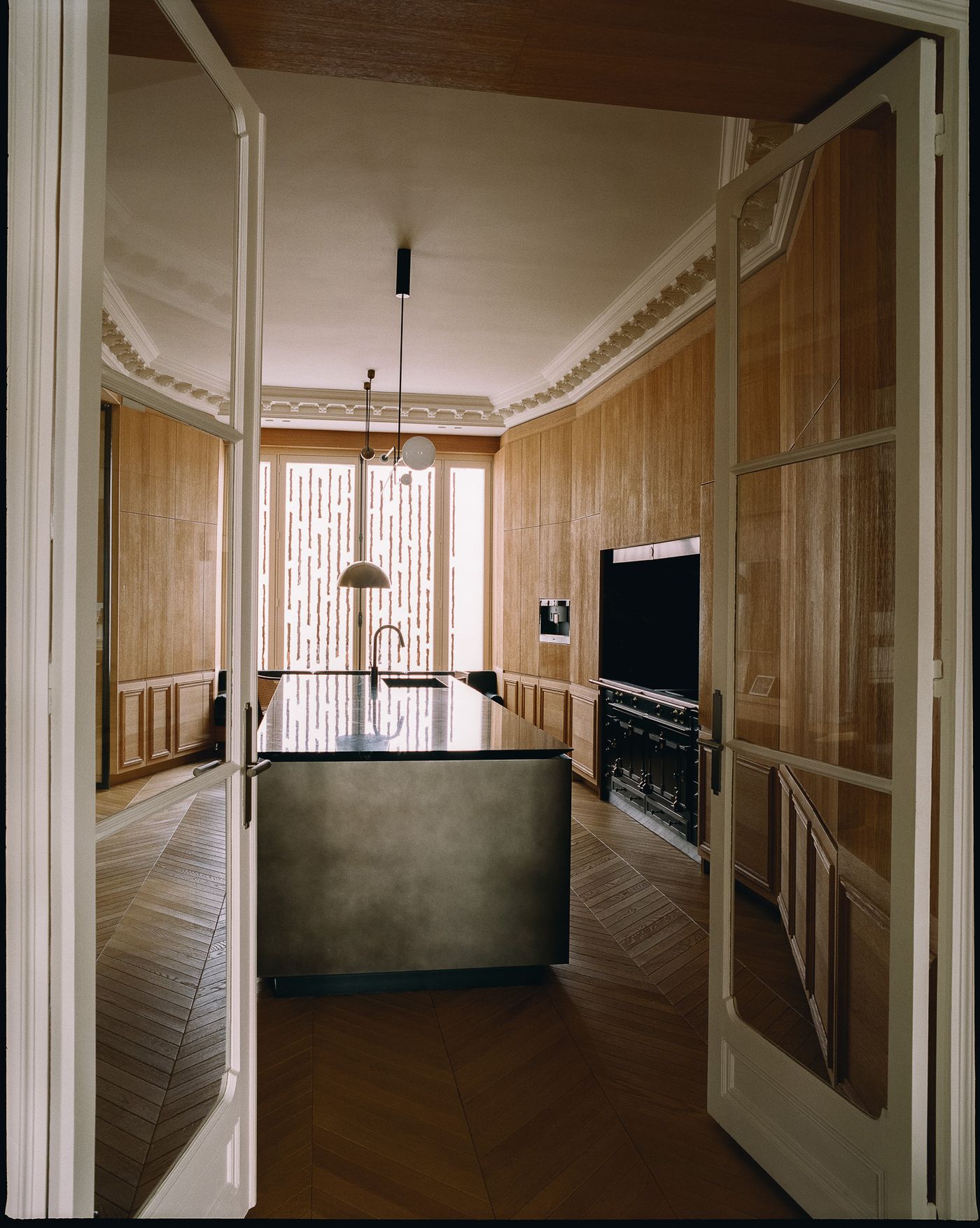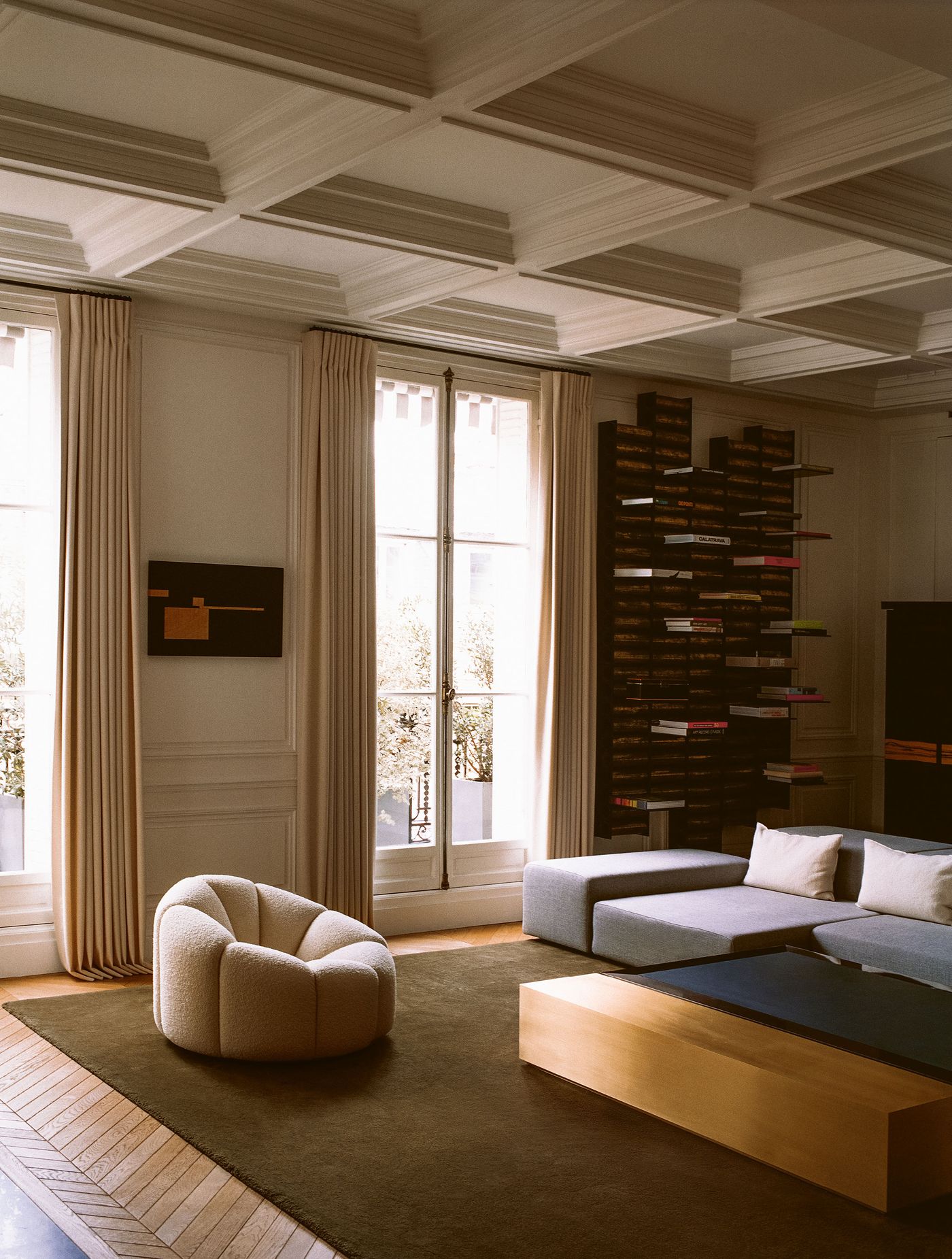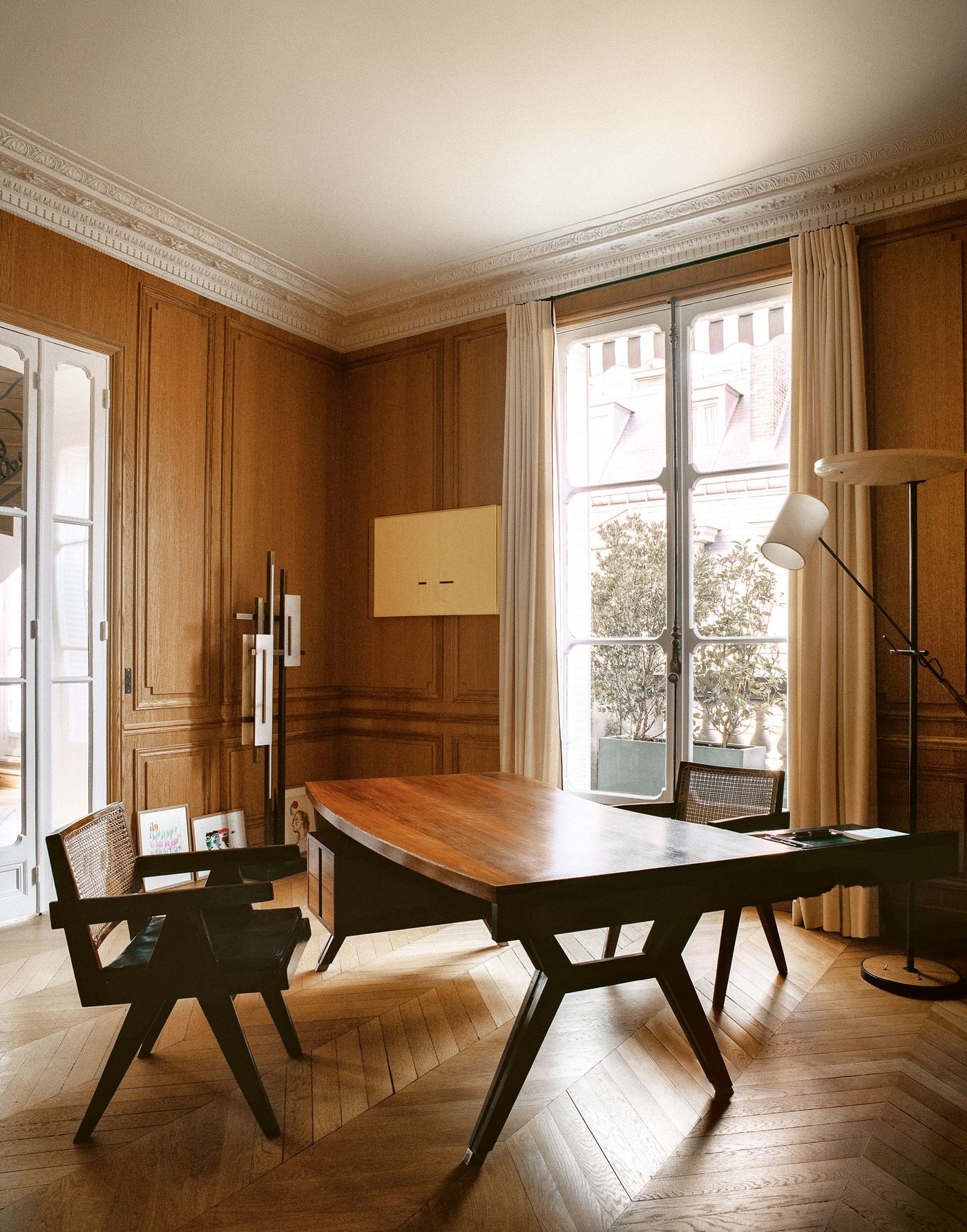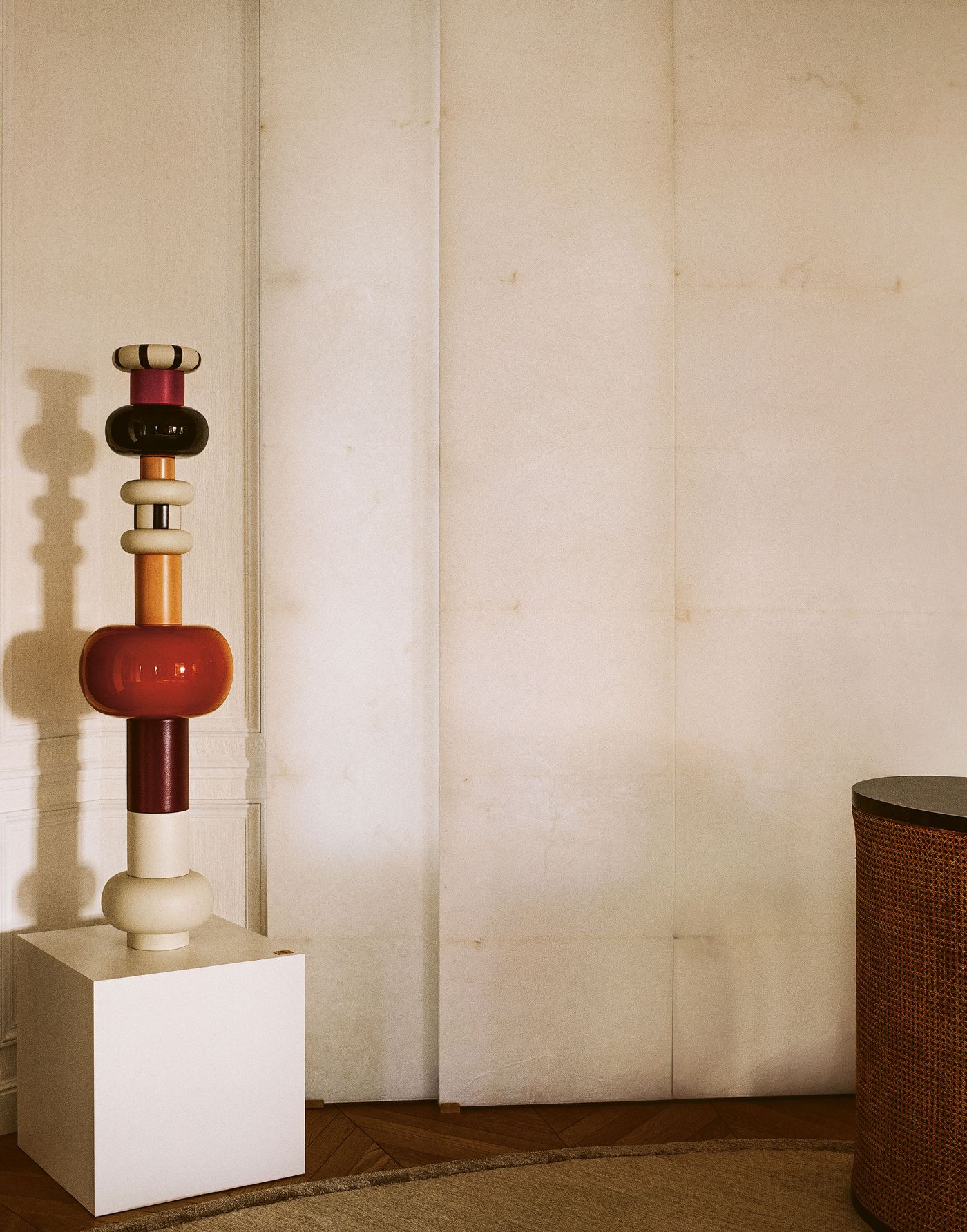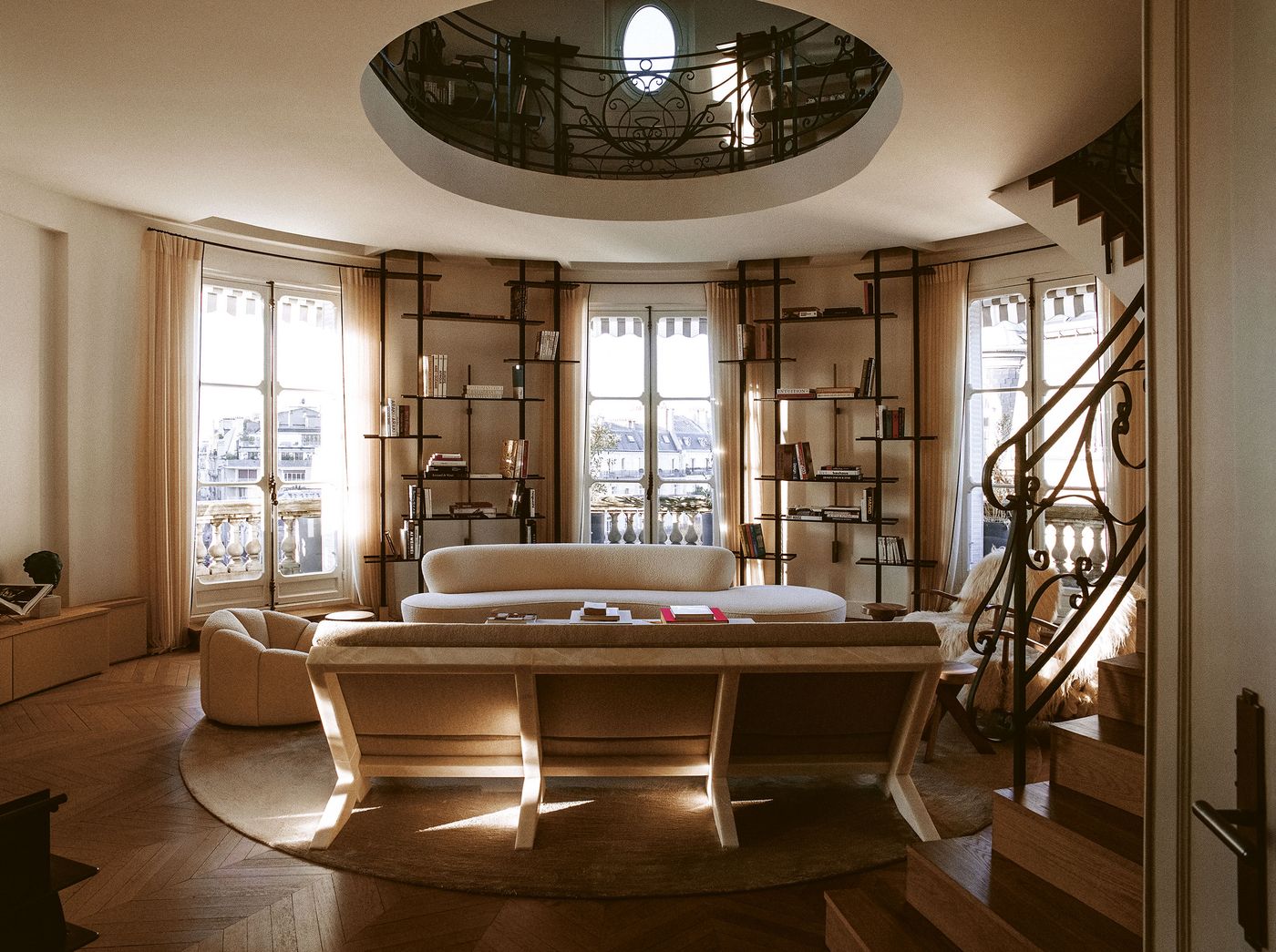
A Sculptural Dialogue with History: Isabelle Stanislas’ Trocadéro Apartment in Paris
Words by Eric David
Location
Paris, France
A Sculptural Dialogue with History: Isabelle Stanislas’ Trocadéro Apartment in Paris
Words by Eric David
Paris, France
Paris, France
Location
Renovated by architect and designer Isabelle Stanislas over the course of two years, this Parisian apartment near Place du Trocadéro unfolds as a study in contrasts where classical rigor meets expressive modernity, masculine structure is softened by feminine grace, and the weight of heritage is balanced by the lightness of contemporary living. Designed for a businessman and his two children, the residence channels Stanislas’ signature blend of architectural precision and poetic restraint, shaped by sensuous materials, sculptural interventions, and a palette that favours softness over spectacle.
Located within a Haussmannian building, the apartment’s stately layout and generous proportions offered both a classical canvas and an architectural provocation. Anchored by a circular entrance hall from which rooms radiate outwards, its interplay of curved and rectilinear geometries informed Stanislas’ sculptural approach, which heightens rather than overwrites the 19th-century framework within the property. Ornate ceiling cornices, new oak wall panelling, and a coffered ceiling in the family room reinforce the apartment’s Haussmannian DNA, while precisely integrated furnishings introduce a modernist rigour. The result is a space where nostalgic grandeur and contemporary minimalism enter into quiet but deliberate dialogue.
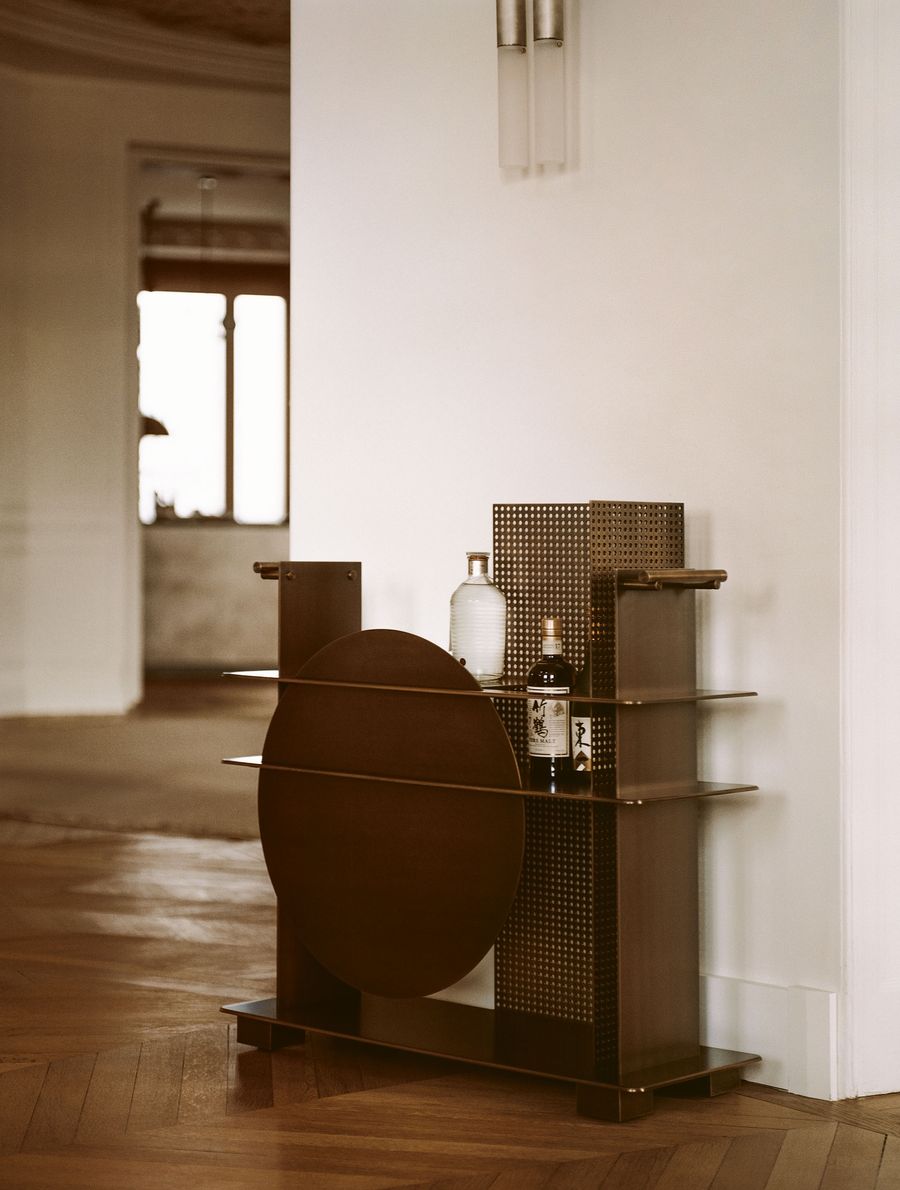
Photography by Matthieu Salvaing.
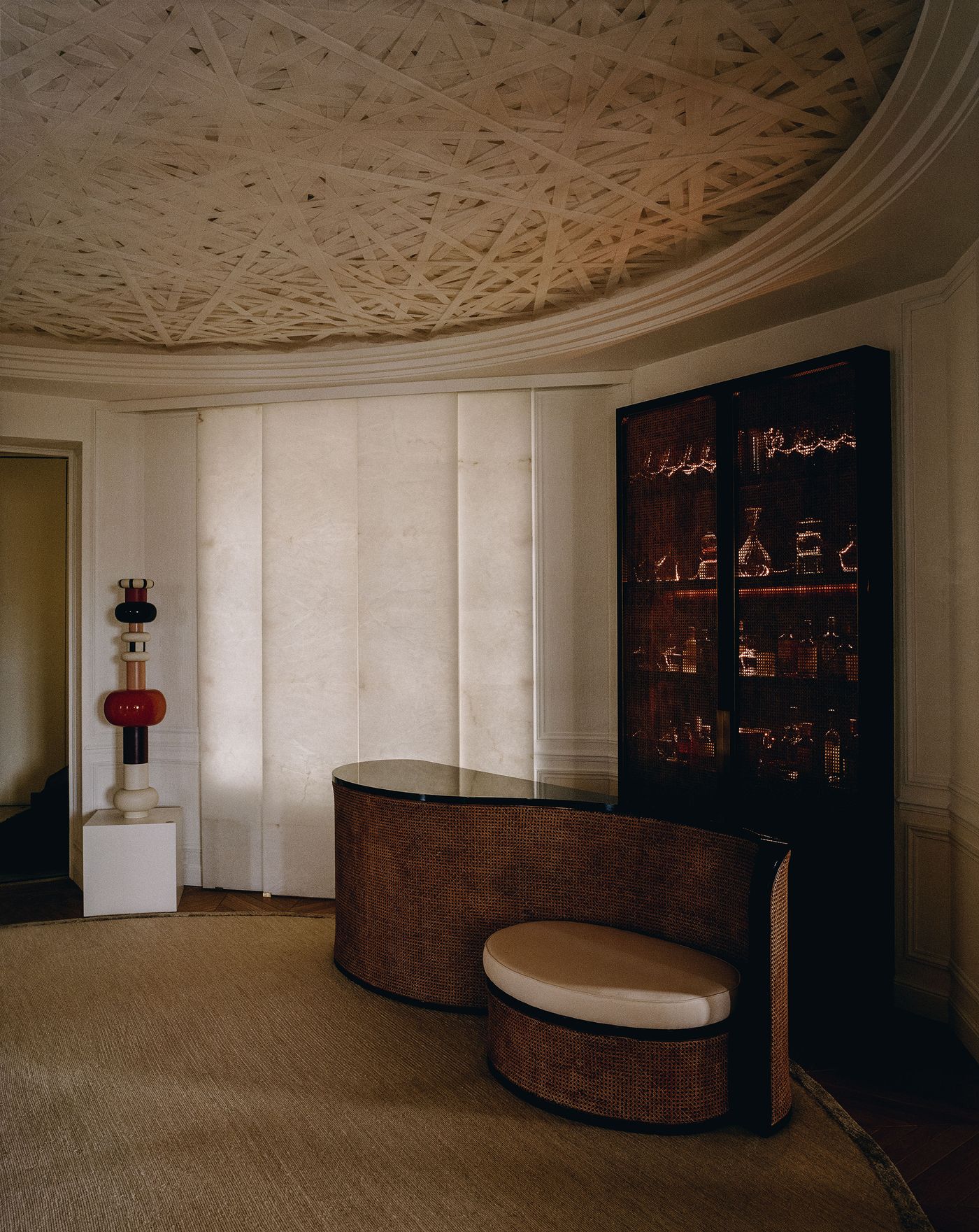
Photography by Matthieu Salvaing.
In the entrance vestibule, this dialogue takes a theatrical turn: a curvaceous bar counter and matching oval ottoman wrapped in woven cane, both softly curved and meticulously composed, stand below an abstract, lattice-like, illuminated ceiling, the work of French artist Yann Kersalé.
It’s in the formal living room, however, that this sculptural language finds its most emphatic expression. After discovering that the room sat directly beneath a domed tower—a turret-like flourish that can be spotted often crowning Parisian corner buildings—Stanislas introduced a ceiling opening, its circular shape echoing the room’s footprint. The intervention not only doubles the height of the space but also reveals the century-old timber structure above, its radial beams fanning out like the spokes of a wheel. A sculptural staircase adorned with a wrought-iron balustrade now curls upwards to a mezzanine-level viewing platform, further amplifying the room’s spatial drama.

Photography by Matthieu Salvaing.
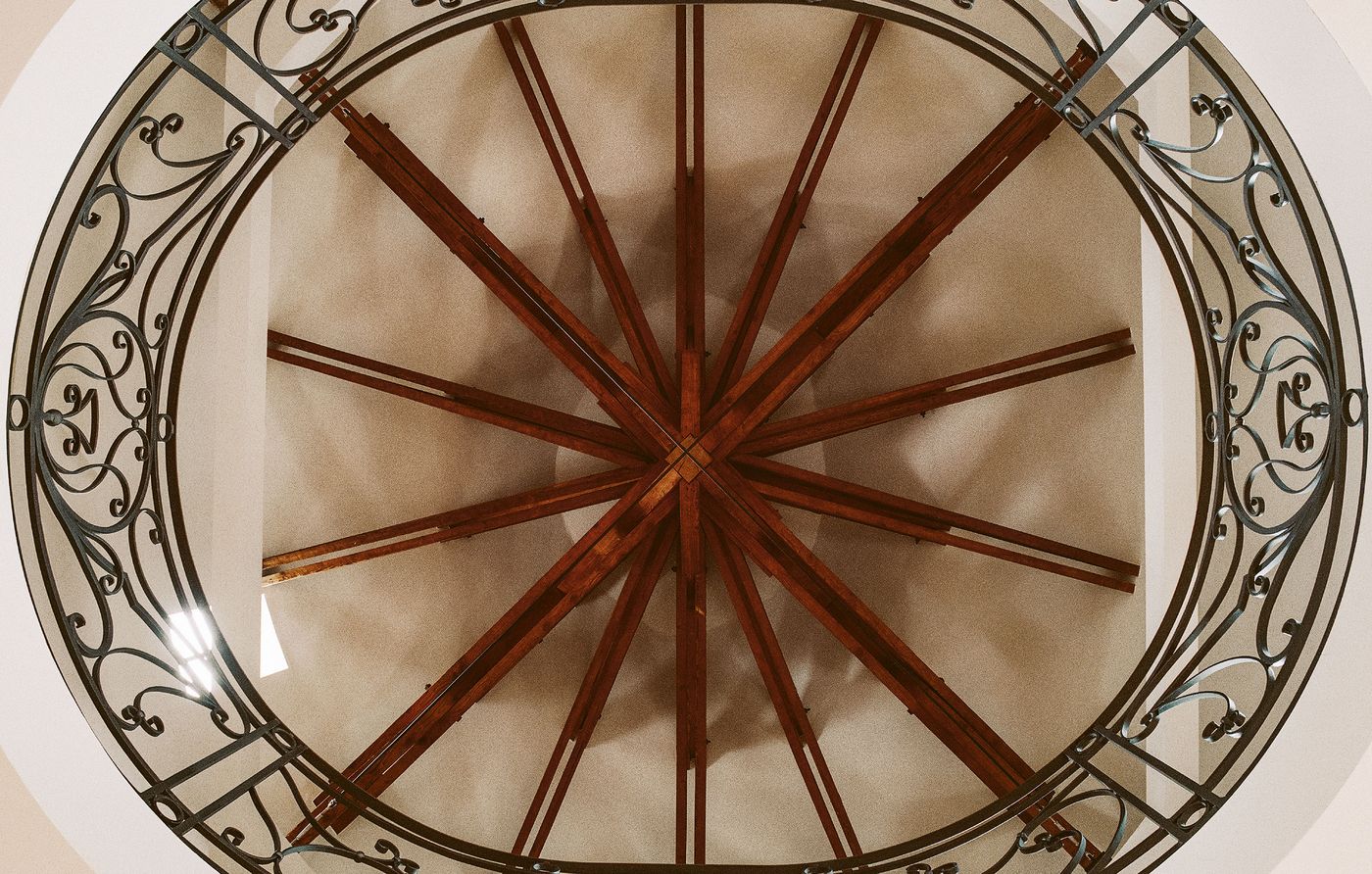
Photography by Matthieu Salvaing.
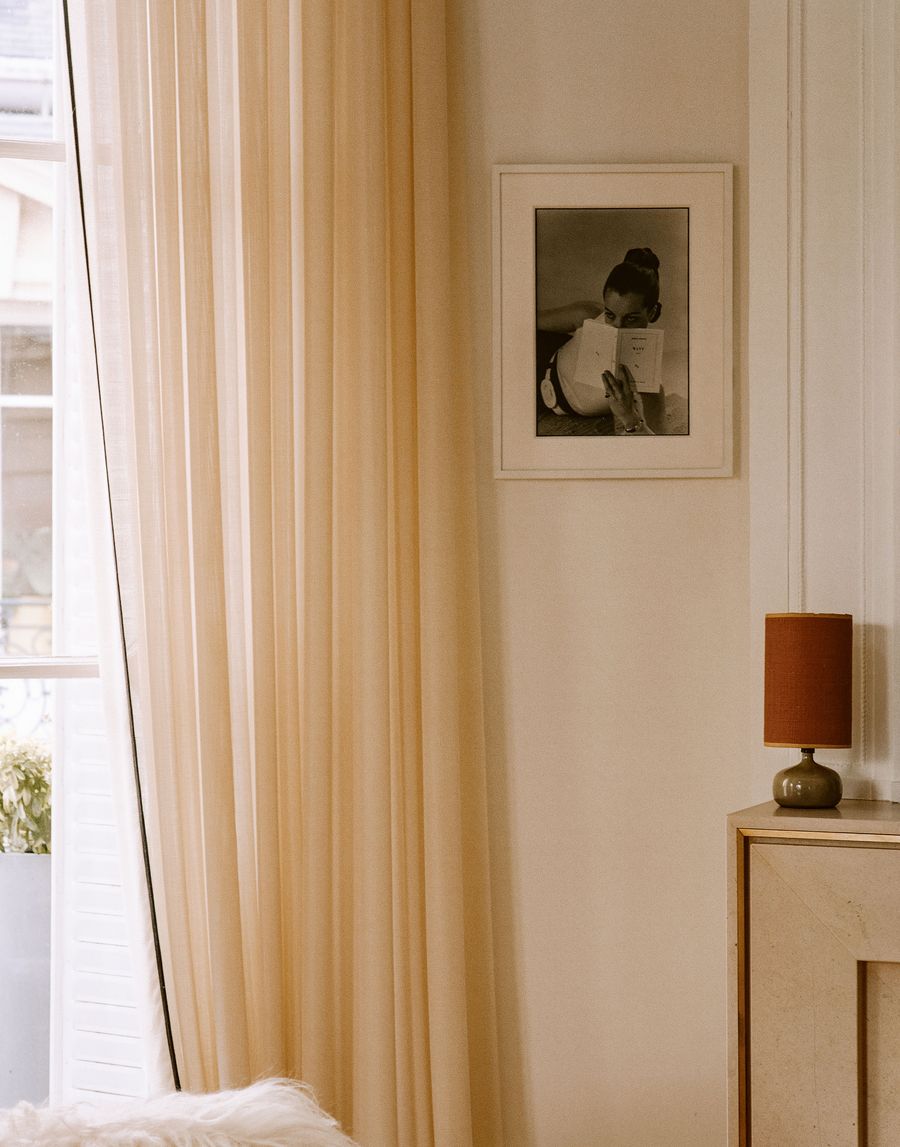
Photography by Matthieu Salvaing.
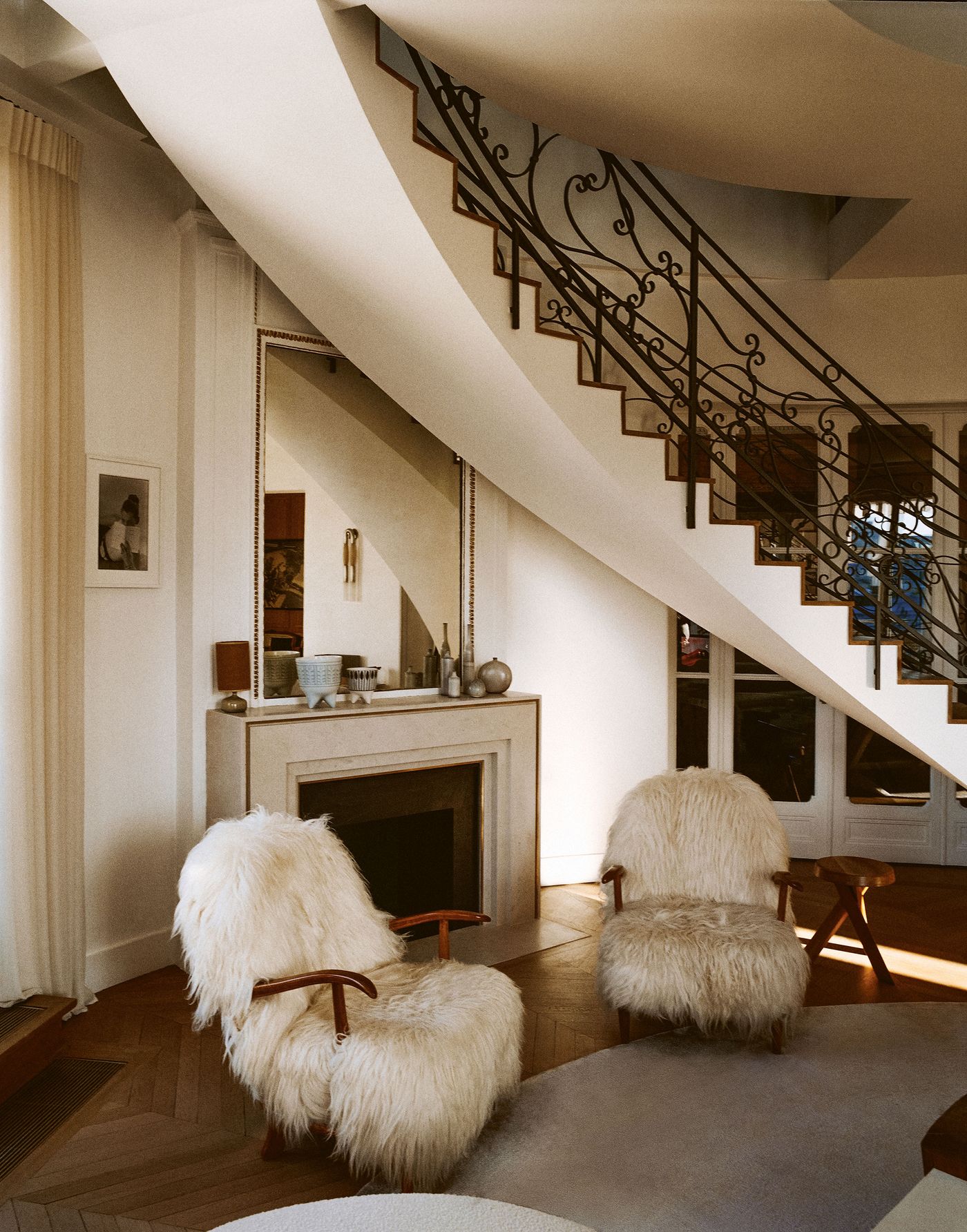
Photography by Matthieu Salvaing.

Photography by Matthieu Salvaing.
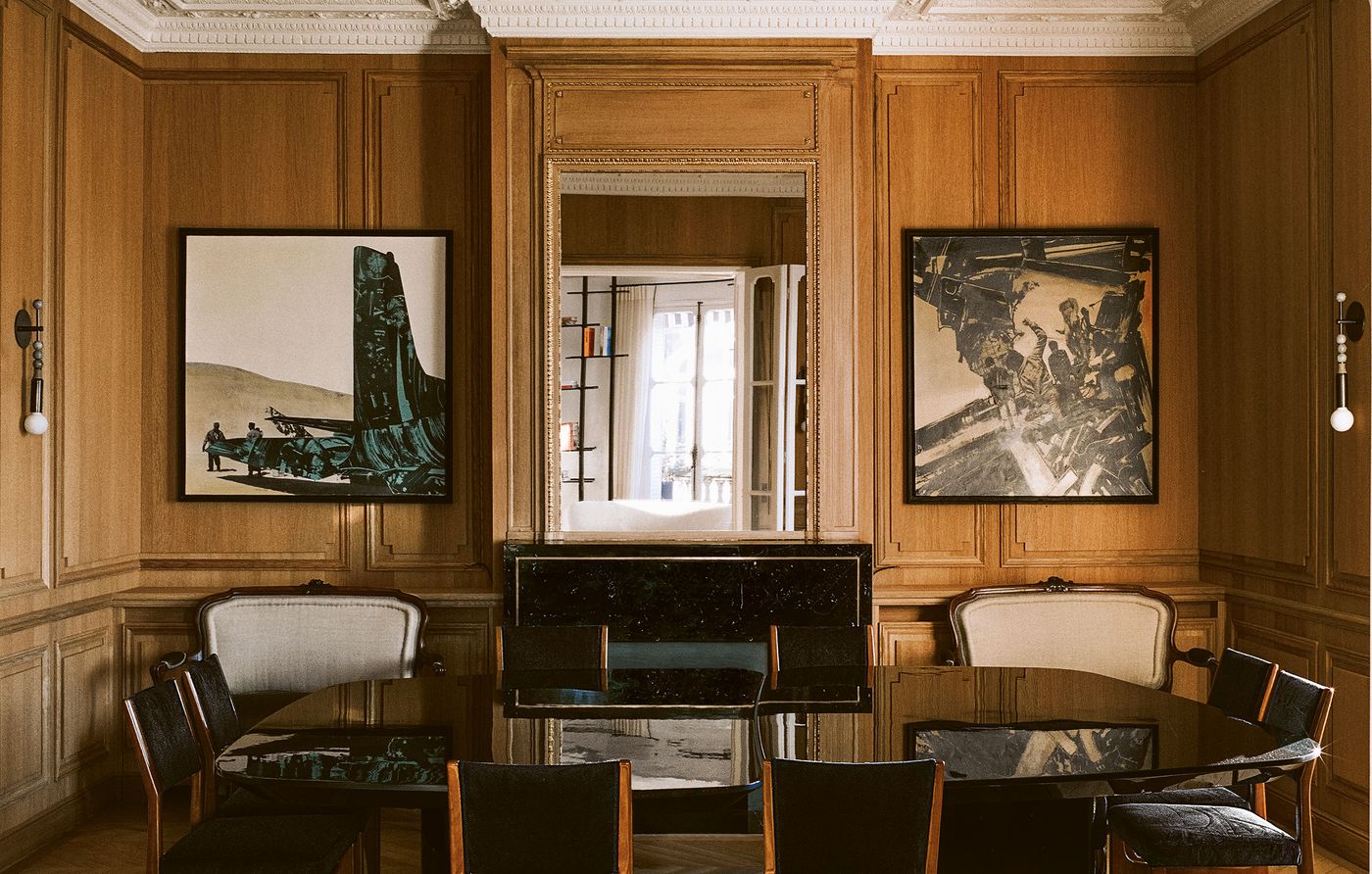
Photography by Matthieu Salvaing.
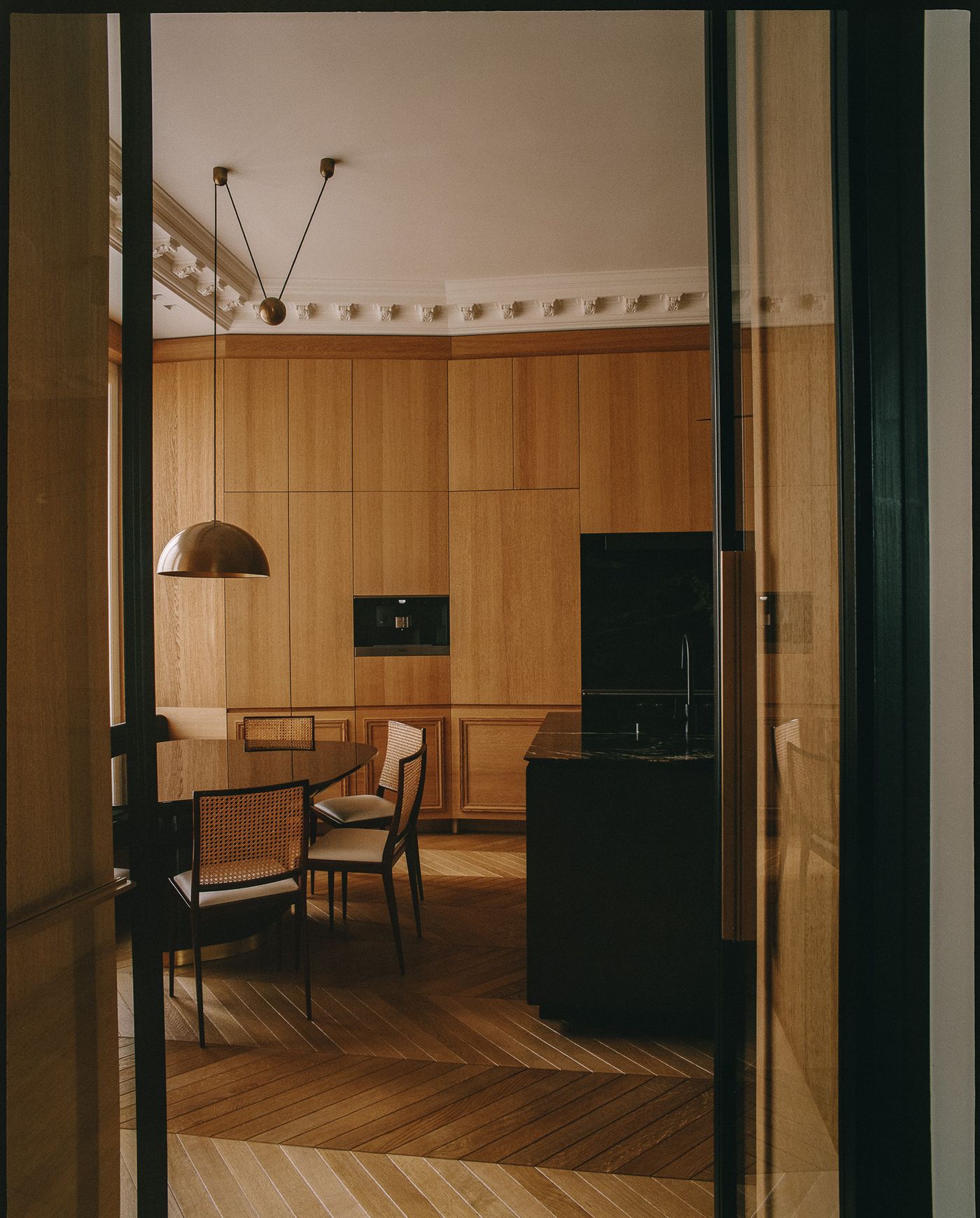
Photography by Matthieu Salvaing.
Furniture plays an essential role in extending the scheme’s sculptural sensibility and deepening the conversation between eras. Stanislas masterfully interweaves mid-century modernist classics from the 1950s and 60s with contemporary pieces by the likes of Dimorestudio and Rick Owens, along with her own custom designs. In the formal living room, the curves of Vladimir Kagan’s Serpentine Sofa and Pierre Paulin’s bulbous Pumpkin Armchair are tempered by the taut geometry of Christian Liaigre’s Nobu Coffee Table and Stanislas’ rectilinear bookshelves. A marble-framed sofa upholstered in Loro Piana cashmere grounds the room in plush restraint, reinforcing e the balance between form and comfort.
In the dining room, a pair of interlocking lacquered tables designed by Stanislas are paired with Gio Ponti’s Leggera Chairs from the 1950s and a ceiling lamp by Angelo Lelli from the 1960s. Flanked by two 19th-century sofas, a minimalist fireplace in black marble picks up the tables’ dark finish. The kitchen maintains this tonal and material dialogue: oak cabinetry meets a monolithic island topped with black marble, while another Stanislas-designed dining table is paired with 1960s Unilabor Chairs by Geraldo de Barros in rosewood and cane, and a 1980s pendant lamp by Florian Schulz.
The master bedroom continues the theme of studied composure and eclectic elegance. Here, the off-centre placement of a vintage alabaster ceiling light from Milan’s Nilufar gallery is echoed by a pair of 1950s Philip Arctander armchairs and vintage bedside tables by Silvio Cavatorta. Wall-mounted lamps in brushed oxidised brass by Dimorestudio provide a sculptural counterpoint, while alabaster window panels in the adjoining bathroom diffuse daylight into a luminous, diaphanous glow.
What emerges in the renovation is less a decorated interior than a space composed, layer by layer, with the precision of a tailored garment. Stanislas herself describes it as “a tuxedo made to measure,” a fitting analogy for an apartment that wears its elegance lightly, concealing the complexity of its orchestration behind a façade of effortless grace.
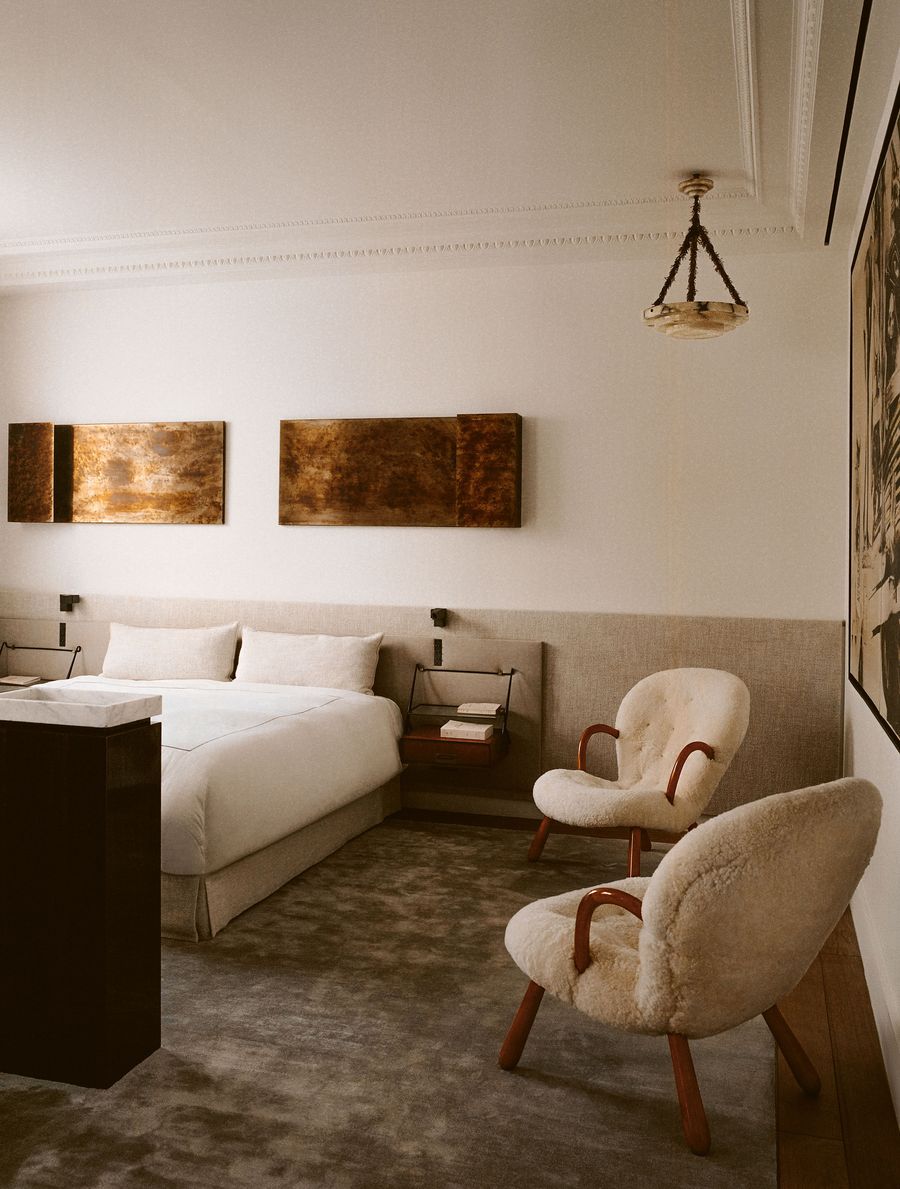
Photography by Matthieu Salvaing.
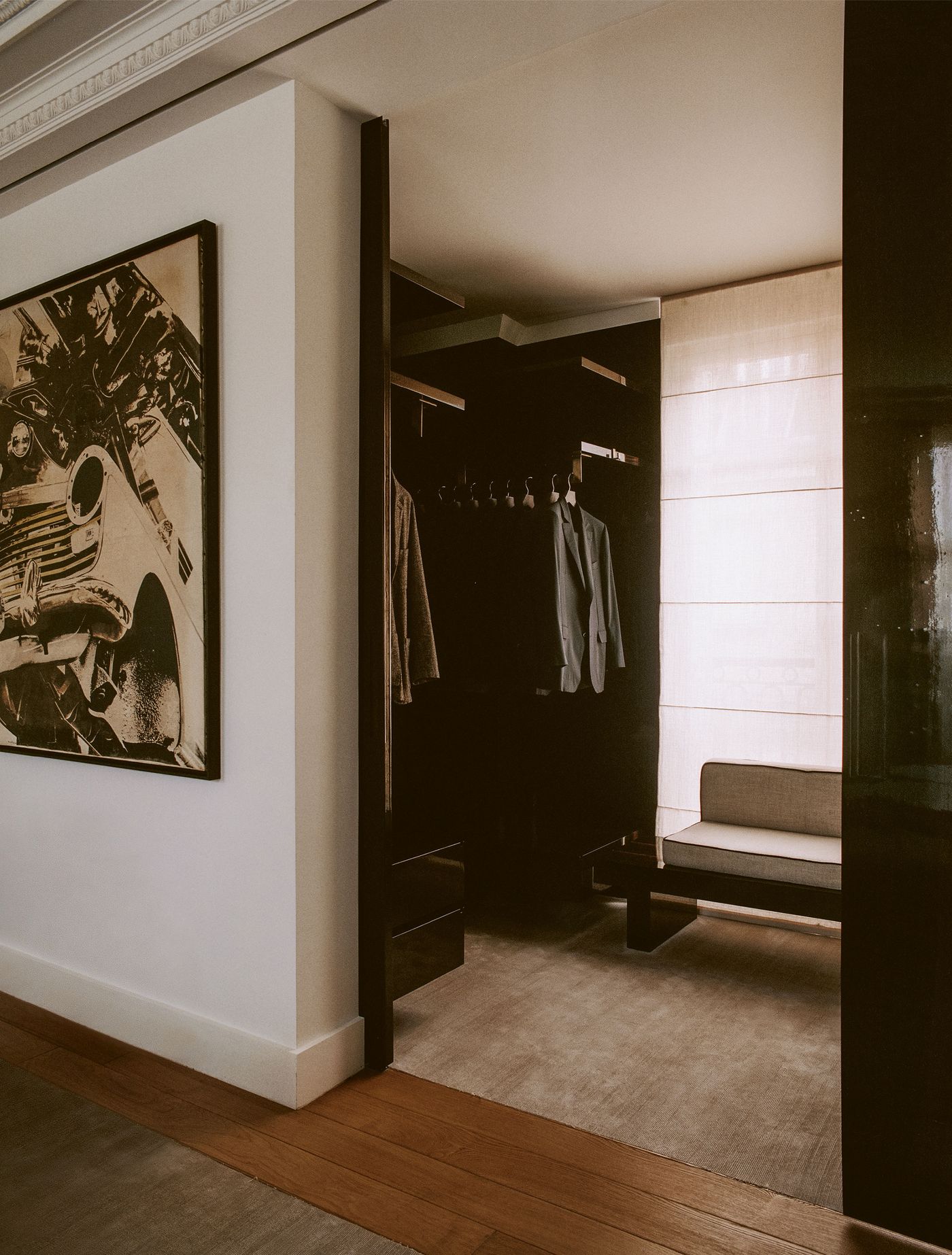
Photography by Matthieu Salvaing.
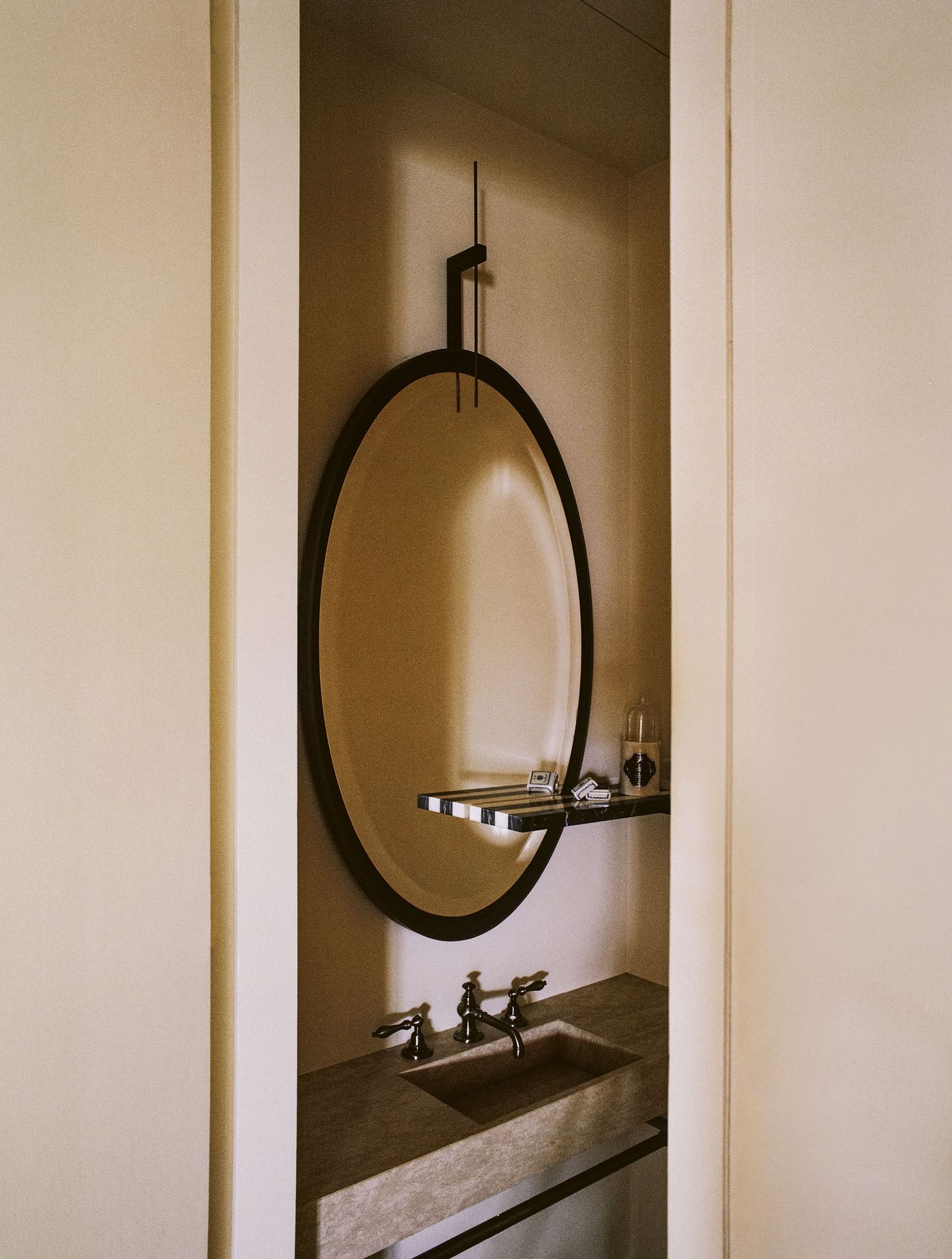
Photography by Matthieu Salvaing.
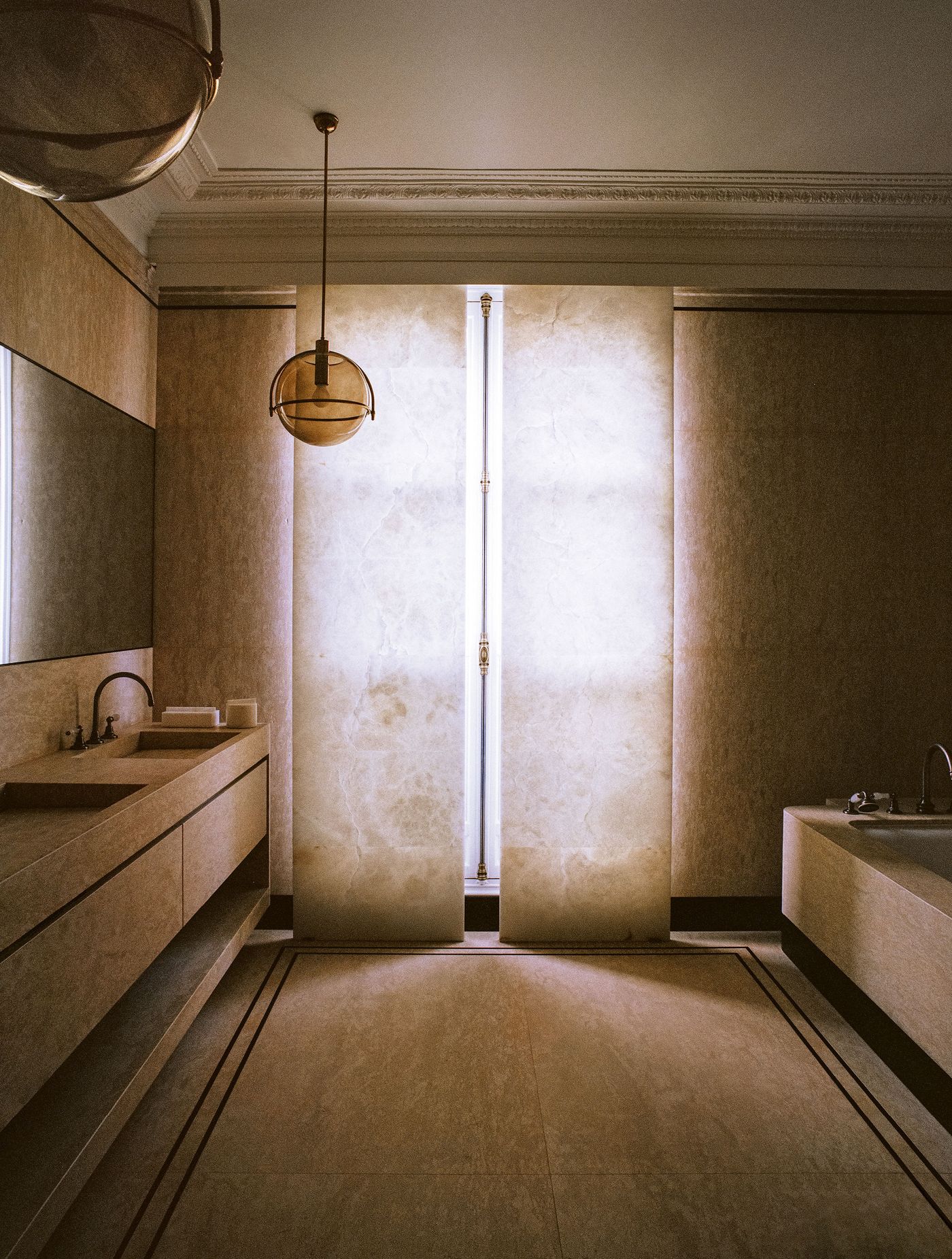
Photography by Matthieu Salvaing.
